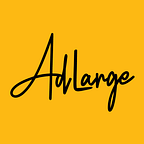Understanding the Podcast Ad Environment
Harness the Power, Part 2: Podcast Buying Guide 2.0
What if we told you there was an advertising platform where a brand can get the power of personal endorsements from influencers, seamless native content, and competitive separation in one accountable, brand-safe environment? No, it’s not too good to be true, it’s podcasts.
What makes podcasts so unique is also what made it work so well for direct response and direct to consumer brands. It’s uncluttered. It’s authentic. It’s personal. In this push to connect deeper with audiences, to be storytellers rather than sellers, podcasts present an opportunity for all kinds of brands looking for new ways to break through the clutter and noise of digital advertising.
Digital advertising revenue surpassed $100 billion in 2018. That’s a lot of dollars and a lot of companies fighting for consumers’ attention and wallets. Digital audio holds $2.3 billion of that pie, growing 23% yoy, and podcasting played a role in that growth. While the projected $500 million in ad revenue podcasting will reportedly take in seems small in comparison, that number will only grow by leaps and bounds over time. Now’s the time to get in the door.
Find your place
Direct response companies may have pioneered podcast advertising, but a growing number of brands are turning to podcasts for awareness and lift too. If your goal is to stay top-of-mind with audiences, podcasts deliver on increasing key metrics like recall, affinity, recommendation, and purchase intent. Nielsen found that CPG brands who are tracking the performance of their podcast campaigns see unaided awareness as high as 69%.
From CPG to insurance, we’re seeing more of those brands making podcasts a must-have for their marketing plans. Podcasting has consistently helped boost the name recognition for young startups, so how can brands maximize the environment and keep listeners engaged?
First, start with genres that speak to your core audience. Finding the right podcast partners and hosts will take some experimenting, but demographic info is widely available for most shows.
Next, get your messaging in order — with 2–3 key talking points max — and make it podcast-first. That means considering the context of when and where your messaging will be heard and having your message speak in a tone that takes that environment into account. Podcasts are predominantly consumed on a smartphone while at home, and the listener may be tuning in for entertainment or to learn something new. (Check out part 1 for more on listener habits). Make sure the copy you provide to guide your message takes all of these factors into account.
Finally, determine how you will track success; will it be a dedicated URL or a custom brand recall study? Whatever you decide, you should have some benchmark in place to help you gauge the success of your campaign.
Know your options
Most shows will have pre-roll (before content), mid-roll (mid 80% of content), and post-roll (end of content) placements available. The host can put their personal spin on these ad units, without disrupting the content environment. Just know that some shows with well-known personalities may charge a premium for talent to endorse a product. Host reads are still a staple of podcast ads because they work — for the sponsor and for the listener. Over two-thirds of listeners agreed that the ads they hear fit the content.
Baked in ads (host reads that are recorded in the show and live in perpetuity) are still widely used for evergreen campaigns, but Dynamic Insertion technology has opened up possibilities for brands that need more refined targeting or the ability to change copy on the fly. Now there’s the matter of measurement. Podcasts are measured based on downloads, but not all downloads are created equal. Podcasts that are IABv2 compliant or certified are using the strictest standard for measurement. If you are entering the podcast space, make sure to ask which kind of ads are available to you and how those downloads are being counted.
Be a unicorn
Podcasts have been a pretty easy place for advertisers to stand out, but that’s changing fast (see the mattress category). Make a lasting impression by looking for premium ad placements or category exclusivity and take advantage of content that’s new to advertisers. Find similarities between your brand and unexpected genres, and if your product is something everyone can use diversify the categories you buy to reach a varied audience.
Stand out by getting creative. Before you repurpose that radio copy, take advantage of the mediums’ knack for storytelling without the limitations of traditional ad units. Use the pre-roll as a teaser. Let the host share a personal experience in the mid-roll. Tie it all back and reinforce your message in the post-roll. The rules are still being written, so there is more room than you think for exploring new ad formats.
Go further
Podcasters are masters at cultivating community and generating loyalty. Their non-audio assets (i.e. social pages, website, and newsletters) are how they connect with fans, get feedback, and grow their audience. They’ve built influence, so tap into that influential power and increase the impact of your campaign through an Instagram story, a well-timed Facebook post, or a shout-out in their newsletter. Stay tuned for more on social, when we dive into some case studies.
We all know you’re thinking them, so we’re going to address those burning questions. Next up in part 3, our resident ad ops expert will answer some frequently asked questions and bust some podcast ad myths.
This is part two of our five-part series.
